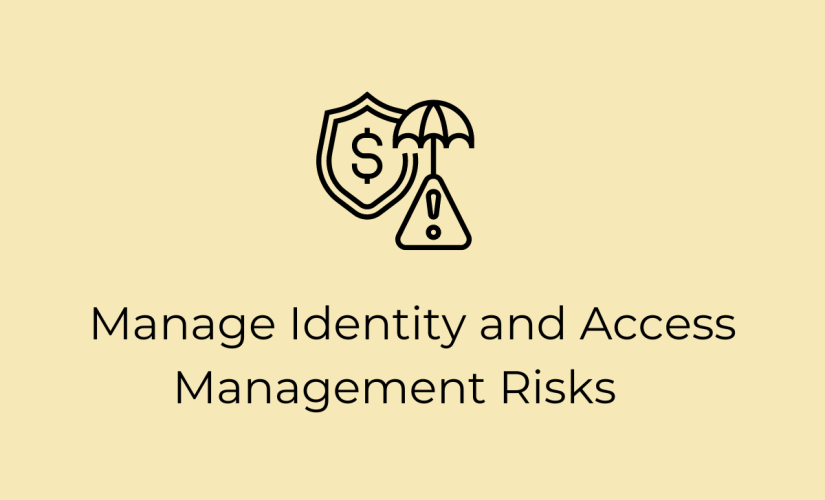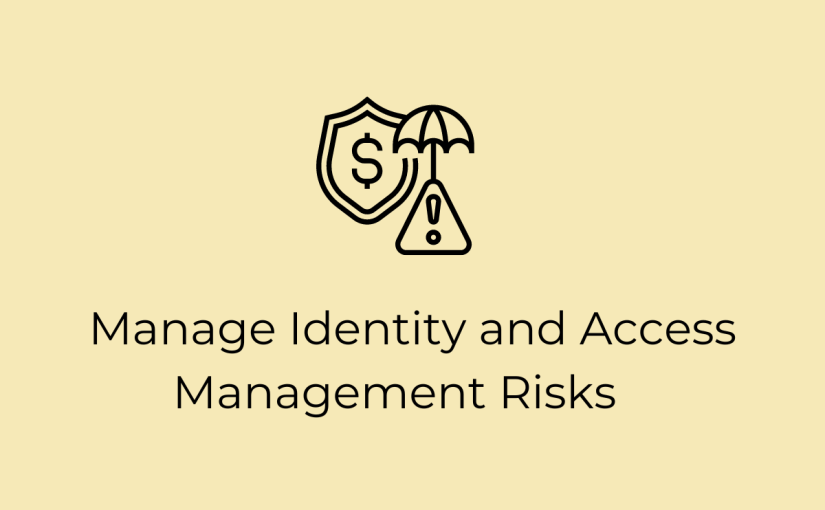How to Manage Risks Associated with Identity and Access Management?
Learn how to effectively manage risks associated with identity and access management with the comprehensive guide. Discover best practices, tools, and strategies to safeguard your organization's sensitive data and prevent security breaches. Start protecting your business today.

A robust and effective Identity and Access Management (IAM) system is necessary to guarantee the security and integrity of a business’s information assets. The security, integrity, and accessibility of sensitive data are, however, subject to a number of concerns that are associated with IAM. These risks include:
- Unauthorized access: Weak or compromised identity and access management can provide unauthorized users with access to sensitive data, leading to data breaches and theft.
- Insider threats: Users with authorized access to systems and data can intentionally or unintentionally misuse their access privileges, causing significant damage to the business.
- Lack of compliance: Businesses that violate IAM regulations risk facing monetary fines, legal repercussions, and harm to their brand.
- Cyberattacks: Cybercriminals frequently target identity and access management processes to gain access to sensitive data.
Given these possible vulnerabilities, it is highly essential for businesses to ensure the security of sensitive data and compliance with legal requirements. Having a strong CIAM system in place as well as routine risk evaluations, vulnerability checks, and penetration tests related to security operations, are some of the ways to control the risks associated with identity and access management practices.
By addressing these risks proactively, businesses can prevent costly security breaches and protect their reputation. That being said, we will now delve into how a CIAM system can effectively manage potential risks involved in identity and access management practices.
CIAM – Briefly Explained
Identity and access management is frequently the initial “touch point” a business has with a potential customer and serves as a persistent representation of a brand. Getting IAM practices properly implemented can help businesses draw in customers, increase revenue, and represent the brand’s reputation in the best possible light. This is where Customer Identity and Access Management (CIAM) comes into play.
CIAM is a vital framework that enables businesses to protect their customers’ identities and control their access to valuable resources like networks, systems, and apps.
In addition to security features like multi-factor authentication, customer data privacy, and regulatory compliance, CIAM capabilities include seamless customer registration, authentication, and authorization procedures.
Furthermore, CIAM streamlines and makes it simpler for customers to interact with applications while maintaining security and regulatory compliance.
Best Practices to Manage Risks Associated with IAM
As previously discussed, businesses leverage identity and access management practices to make sure every step of their customer’s journey is smooth and secure and provides the experience they expect. But it has two sides to it.
Without a well-thought-out strategy, identity and access management practices can also cause conflict. Customers may stop using the brand if they find tasks like registration, logins, and updating preferences to be difficult or time-consuming. The key is to carefully and strategically use the power of CIAM solutions to any business’s advantage or favor.
When done right, CIAM may lay the groundwork for the great customer experience (CX) needed to triumph in the wars for gaining customers, retaining them, generating revenue, and earning their trust.
So how do businesses leverage identity and access management practices effectively to get the most out of it? This question leads us to the next topic of how the CIAM solution can effectively manage risks associated with identity and access management operations.
Risk 1: Compromising CX for Security
Adding more authentication layers, such as the standard email/password signup process combined with two or multi-factor authentication, ensures the highest level of protection for both customer and business resources. However, if such security measures have a detrimental effect on the customer experience and satisfaction.
Solution: The customer’s overall experience shapes their decision and is often what creates their first impressions of the brand. To manage friction and, at the same time, ensure security, businesses can use a top-tier CIAM system that effectively streamlines the customer journey right from the initial registration process.
The CIAM system achieves this by eliminating password-based logins, enabling progressive profiling, and seamlessly integrating single sign-on (SSO) and risk-based authentication methods. Together, these comprehensive features of the CIAM system minimize friction while simultaneously boosting security to maximize the customer experience.
Risk 2 – Security Threats
Account takeover or data breach happens when an unauthorized person accesses a customer’s account and utilizes it for their personal gain, which is one of the major risks associated with identity and access management practices. This can entail carrying out fraudulent transactions, accessing private data, or altering account settings. Customers who have their accounts taken over may incur huge losses, and the business’s reputation could also deteriorate.
Solution: To manage the risk of account takeover and fraud, it is important to leverage an effective CIAM solution that enables businesses to implement strong authentication techniques like passwordless practices, step-up authentication, and risk-based authentication that detects and prevents suspicious login attempts.
Therefore, having a robust CIAM framework in place for monitoring and identifying suspected fraudulent activity is crucial to prevent security threats. In fact, to swiftly identify and address any security events, it’s also crucial to have a strong incident response plan in place.
Risk 3: Privacy Concerns
Another major risk associated with identity and access management operations is the potential for privacy concerns to arise. For customers to trust and support a business, they must have trust that their personal information is being handled responsibly, securely, and in accordance with privacy and regulatory laws.
If a business fails to adequately protect and manage customer data, customers may lose trust and choose to take their business elsewhere.
Solution: To lessen the risk of privacy concerns in identity and access management operations, businesses should place a high emphasis on transparency in their data gathering and management practices.
Customers should be able to decide who gets to see their information and how it is shared, and they must also have the choice to withdraw their consent at any point. This approach shows a commitment to protecting customer privacy and promoting transparency in data handling.
To make sure that their identity and access management procedures are compliant with industry best practices and regulatory laws, businesses should evaluate and update them regularly.
In fact, the processes for regulatory compliance can be made simpler with a top-tier CIAM solution that automates audit reporting. It can also help develop the thorough reports required to demonstrate that the business strictly adheres to compliance.
Risk 4: Outdated System/Authentication Practices
To enhance security and the customer experience in identity and access management activities, it is necessary to modernize outdated security systems that still rely on traditional authentication methods.
The primary reason for this is that such obsolete practices are susceptible to security breaches due to outdated authentication protocols and a lack of timely updates to address newly discovered vulnerabilities.
In fact, out-of-date authentication methods, such as password-based practices, may provide a difficult user experience, lowering customer satisfaction and increasing customer retention rates.
Solution: Embracing a modern CIAM system can provide up-to-date authentication methods for businesses to incorporate as per their need. This can result in greater security, an improved customer experience, and increased operational efficiency, and can help mitigate the risks connected with outdated authentication methods.
Through frequent security updates and fixes, a modern CIAM system can address security flaws, enhance customer experience and simplify secured access across various platforms.
A CIAM solution can also help address the security risks associated with outdated authentication practices by providing comprehensive, up-to-date authentication options like step-up authentication and risk-based authentication that prioritize both security and convenience for customers.
Wrapping Up
In order to effectively reduce risks and safeguard their IAM operations, businesses must continuously review their identity and access management strategies and processes. Also, it goes without saying that the overall security of the user and business data depends on its capacity to handle the dynamic difficulties or risks associated with IAM procedures.
Therefore, businesses must evaluate the risks involved in each stage of an IAM operation to ensure readiness for potential problems or vulnerabilities. Businesses can also invest significantly in top-tier CIAM systems that are dependable, efficient, and compliant with industry standards. They can proactively ward off threats by doing this, fortifying themselves against new threats and vulnerabilities.
Originally published on ReadWrite



